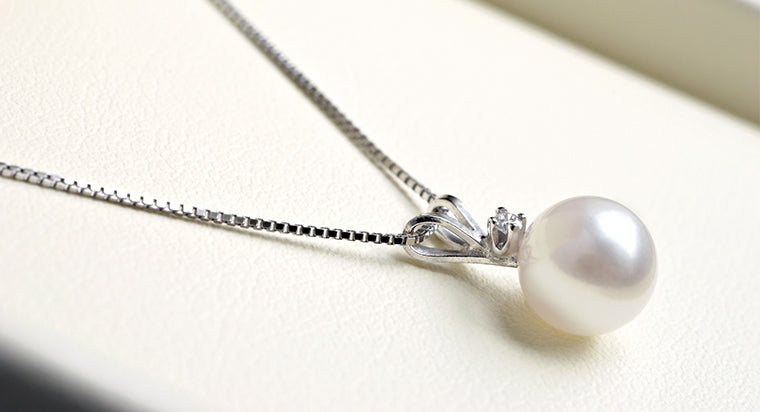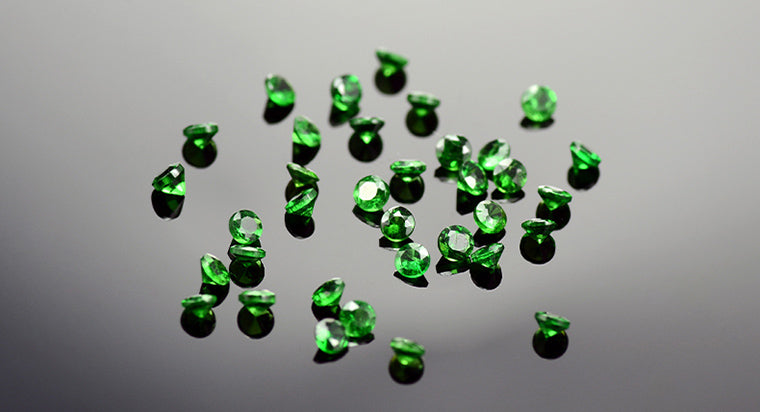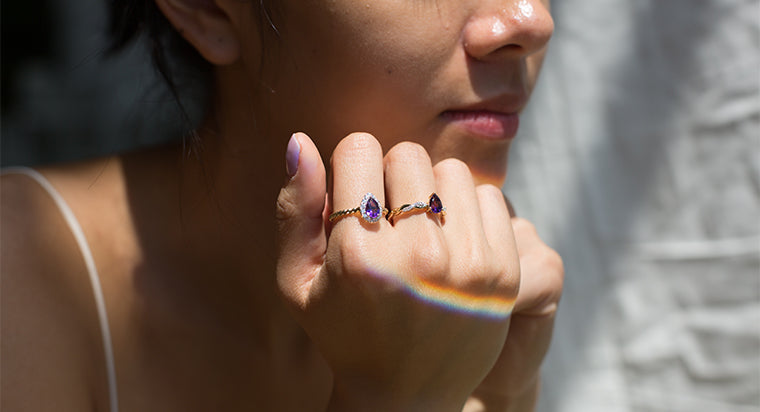Natural Ruby Grading and Ruby Color Chart

Rubies are gemstones that are more expensive than most others. They are one of the most important gems in the colored stone market. There are a few important factors considered when assigning natural ruby grades. These include color, clarity, inclusions, and transparency. The cut and weight are also reviewed, and sometimes the origin of the ruby can affect its grade as well.

With this system, rubies can be graded according to different ranks. The categories of this grading system include AAA, AA, A, and B qualities. Above you can see a ruby color chart with the different grading ranks labeled under each stone.
- Natural AAA - This grade represents just 1% of all natural gemstones. Any rubies in this category are extremely rare and expensive
- Natural AA - This grade accounts for 10% of all natural gemstones that are available in the world. Any rubies in this grade are typically considered high quality, and this is the best grade to use for fine jewelry making
- Natural A - This grade forms the top 20% of natural gemstones. It’s not as amazing as the AA grade, but it’s still considered to be great. Fine jewelry is also made using this grade
- Natural B - This category accounts for over 50% of natural gemstones
TABLE OF CONTENTS
Red Ruby Color
The name ruby is derived from the Latin word “ruber,” which means red. When determining the quality of ruby based on its color, the hue, saturation, and tone must always be taken into account. Hue is important because it refers to the basic color of rubies. For example, different hues include red, slight orange, strong orange, slight purple, and strong purple. If a ruby has a red hue, that is considered to be ideal. Saturation is what gives ruby its color purity and intensity. It’s the extent to which the hue is masked by brown or gray. The color saturation categories include vivid, strong, fair, medium, and weak. The highest quality rubies always have vivid color saturation. Finally, the tone refers to how much color is in a ruby gemstone. Its ranges include very dark, dark, medium, light, very light. A medium tone is ideal for rubies.
Clarity and Inclusions
The clarity in rubies refers to how many inclusions it has. Here are some in-depth clarity grades that can determine the overall clarity of natural rubies.
- VVS - Very, very slightly included. These inclusions are minor and can only be seen under 10x magnification. They do not effect on the appearance of the natural ruby.
- SI1 - Slightly included. There are large or many inclusions that can easily be seen with 10x magnification, and they’re also apparent to the naked eye. They have a slight effect on appearance, but little effect on overall brilliance.
- SI2 - Slightly included. Inclusions are easy to see under 10x magnification. They have a slight effect on appearance, and also a slight effect on brilliance.
- I1 - Obvious inclusions. There is an obvious effect on the stone's appearance, brilliance, and transparency.
- I2 - Prominent inclusions. These have a very significant effect on appearance, brilliance, and transparency.
- I3 - Many prominent and obvious inclusions. There is a severe effect on brilliance, appearance, and transparency.
Rubies that are graded as VVS and VS are considered to be the highest qualities.
There are many different kinds of inclusions that are found in rubies. An inclusion is any characteristic that is found inside the stone. Inclusions are natural. Here are common inclusions that are found in natural rubies.
- Crystals - solid inclusions ranging in shape and size
- Needles - Long and thin inclusions that consist of crystals or tubes filled with gas or liquid
- Silk - Fine fibers of rutile or other minerals that resemble silk. Silk is the preferred inclusion in rubies
- Cracks - Feather-like inclusions that also go by the names fractures or fissures
- Twinning - Two crystals that have grown out of one another, or next to each other
- Parting - Any breakage that occurs along a plane of weakness
- Halos - Circular features that surround a crystal
Ruby Transparency
The degree of visibility through natural rubies is referred to as transparency. It’s a quality that is often overlooked when discussing rubies. The categories of transparency include transparent, semi-transparent, translucent, semi-translucent/semi-opaque, and opaque. Transparent rubies have excellent brilliance regardless of any inclusions that they might have. Objects always look clear and distinct through the stone. With semi-transparent rubies, objects appear slightly blurry through the stone. Translucent rubies make objects hard to see. Light can pass through, but it’s slightly diffused. Semi-translucent rubies have a small fraction of light that can pass through the gemstone. Finally, with opaque rubies, almost no light can pass through the stone. Having a transparent ruby is considered ideal, and it’s the highest quality.
Ruby Treatments
The most common treatment for a natural ruby is heat treatment. Rubies are heated to improve their clarity and color. Temperatures more than 1,700 degrees Celsius are used to dissolve silk and improve the overall clarity and color. This can affect their grade and make them higher-quality and more appealing.
Overall, natural rubies are amazing gemstones. They follow a similar process of grading that other gemstones do. Their color, clarity, inclusions, transparency, and treatment are taken into consideration when determining their quality and grade.
FAQs
What are the factors that affect the grade of a ruby?
Color is the most important aspect of this gem, and the best quality rubies display a vibrant red to purplish-red hue. Other factors that affect the grade of a ruby include the cut, clarity, and carat weight.
Where does ruby get its name from?
The name ruby is derived from the Latin word "ruber," which means red.
What are the various types of inclusions found in a ruby?
The various inclusions in rubies include crystals, needles, silk, cracks, and halos.
How is a natural ruby treated?
It is common for natural rubies to undergo heat treatment to improve their clarity and color
Is an opaque ruby considered good?
No, and this is mainly because almost no light can pass through an opaque ruby. Therefore it looks lackluster.









